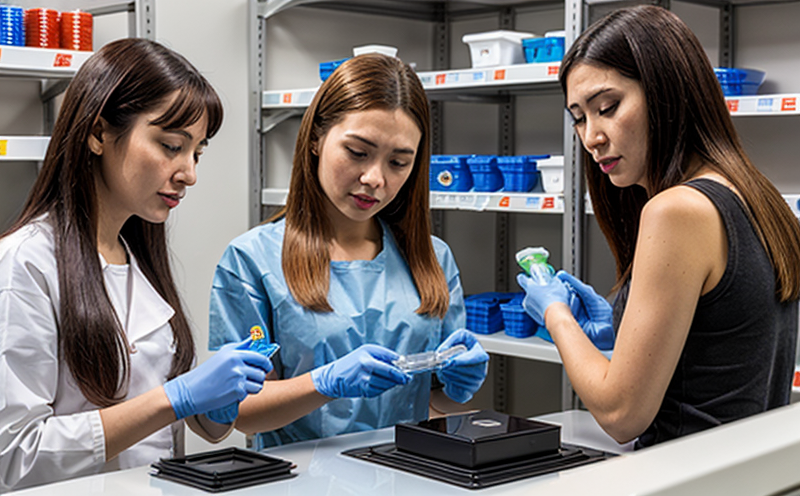EPA 3545 Solvent Extraction Testing of Consumer Plastics
The EPA 3545 method is a critical process used to determine the presence and amount of organic solvents in consumer plastics. This testing is essential for ensuring that products comply with environmental regulations, particularly those related to the release of harmful chemicals into the environment.
This service involves extracting organic compounds from plastic materials using a solvent solution before quantifying these extracted substances through various analytical techniques like gas chromatography or infrared spectroscopy. The test results help manufacturers understand how their products interact with the surrounding environment, allowing them to make informed decisions about material selection and formulation adjustments.
The primary goal of this testing is twofold: first, it identifies potential sources of contamination in consumer goods; secondly, it provides data that can be used by regulatory bodies like the EPA to enforce compliance with relevant laws. By conducting thorough solvent extraction tests on all types of consumer plastics, including packaging materials and household items, companies demonstrate their commitment to sustainability and public health.
Consumer plastics represent a significant portion of everyday life products such as toys, electronics cases, food containers, and more. As these items are often exposed directly to users or used in environments where they come into contact with various substances, it's crucial to ensure that the materials used do not release harmful chemicals under typical conditions.
The EPA 3545 method is particularly relevant for industries dealing with polyvinyl chloride (PVC), polystyrene, and polyethylene terephthalate (PET). These materials are widely used in packaging solutions due to their durability and cost-effectiveness. However, they can also release certain solvents during production or use which may pose risks if not properly managed.
Understanding the specific compounds present within each type of plastic helps manufacturers identify areas for improvement regarding both product performance and environmental impact. For instance, replacing a problematic solvent with one that has lower volatility reduces emissions while maintaining functionality.
Scope and Methodology
| Parameter | Description |
|---|---|
| Purpose of Testing | To quantify organic solvents extracted from consumer plastics using a standardized procedure. |
| Materials Required | Solvent extraction solution, appropriate containers for sample preparation, analytical instruments like gas chromatographs and spectrometers. |
| Sample Preparation | Cut samples into small pieces to ensure even distribution of the solvent across all parts of the plastic. |
| Extraction Procedure | Place prepared samples in a Soxhlet extractor containing the extraction solution, then heat until complete dissolution. |
| Analytical Techniques | Use gas chromatography to identify and quantify individual components of the extracted solvents. |
Eurolab Advantages
- Comprehensive knowledge base covering all aspects of polymer & plastics testing.
- Experienced staff trained specifically in performing EPA 3545 tests according to current standards.
- State-of-the-art laboratory facilities equipped with advanced analytical equipment for precise measurement and analysis.
- Access to cutting-edge software tools that facilitate data interpretation and reporting.
- Prompt turnaround times without compromising accuracy or reliability of results.
- Dedicated technical support available throughout the testing process, from initial consultation through final report generation.
Environmental and Sustainability Contributions
- Identifies potential environmental hazards early in the product lifecycle to prevent unnecessary harm.
- Encourages industry-wide adoption of safer materials through stringent testing protocols.
- Supports regulatory compliance, ensuring that products meet strict environmental protection requirements set forth by government agencies worldwide.
- Promotes innovation within manufacturing processes by highlighting areas where improvements can be made to reduce chemical emissions.





